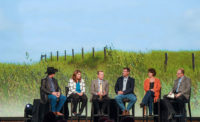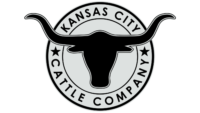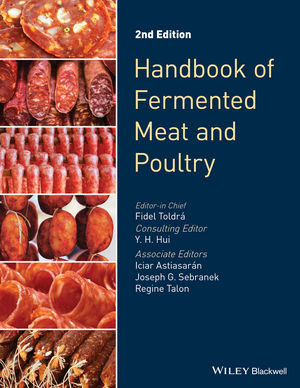Yet some of the “social issues” associated with raising beef, such as the treatment of animals raised for beef or the environmental impact of producing beef, are increasingly important — in fact, half of consumers say that these things are extremely or very important to them.
As a result, consumers today feel conflicted about beef — they love the taste, the romantic imagery of cowboys working hard on the farm and the unmistakable sizzle of a steak on the grill, but they question whether beef comes from family or “factory farms.”
At the root of these conflicting emotions, we find the very simple truth — consumers today know little about how beef is raised or who raises it. In fact, Checkoff-funded research shows that only four percent of consumers say that they know the beef industry very well. This familiarity is crucial in breeding trust and favorability with consumers — of consumers who say that they know the beef industry somewhat or very well, 87 percent view us favorably.
To lead the charge in reconnecting consumers with the beef industry, cattlemen invested Checkoff dollars to develop “The Cattlemen’s Stewardship Review: Connecting Our Vision and Values,” a first-of-its-kind look at cattlemen’s influence on the nation’s communities, the economy, public health and the environment. The Cattlemen’s Stewardship Review (CSR) provides a thorough look at how the entire beef community works together to bring beef from our pastures to consumer plates and all that this process encompasses.
The review is based on a statement of seven fundamental principles adopted by U.S. cattle farmer and rancher leaders at the National Cattlemen’s Beef Association (NCBA) Board of Directors’ meeting in February 2011. The statement of principles detail cattlemen’s commitment to preserving the environment, protecting our animals, providing quality food, enhancing food safety, investing in our communities, embracing innovation and creating a sustainable future for generations to come.
The review explores how the beef industry blends time-honored traditions with modern science in order to raise good food and healthy animals, while also maintaining a healthy environment and building strong communities. It highlights and recognizes how cattle farmer and rancher efforts have resulted in major accomplishments in each of these key areas, while also identifying a vision for continuous improvement to help serve as our roadmap into the future.
In short, it’s the complete story of the social responsibility and commitment of nearly one million cattlemen who thoughtfully and responsibly raise beef that feeds millions of people around the world.
Good Food
Raising safe and wholesome beef that nourishes families is a top priority for U.S. cattle farmers and ranchers. When looking at the accomplishments in the area of “Good Food,” the Review highlights the following major accomplishments:
· Feeding the World— U.S. cattlemen provide 20 percent of the world’s beef with only 7 percent of the world’s cattle, meaning that we can help feed a growing population both in the U.S. and abroad and meet consistent consumer demand for beef while making the best use of resources like land, water, feed and fuel.
· Protecting Against Pathogens— Cattlemen have invested $30 million since 1993 in research to improve beef safety and the entire beef industry as a whole invests $550 million annually to implement beef safety ”hurdles” throughout the production chain. Due in part to these efforts and others, there has been a significant reduction in foodborne illnesses, including reducing E. coli O157:H7 incidence to help meet the “Healthy People 2010” goal of no more than one case per 100,000 people.
Healthy Animals
Cattlemen have long recognized that healthy animals are the foundation of a healthy and safe food supply. According to the review, cattlemen are committed to:
· Raising Quality Beef Through Quality Care — Quality beef starts with quality animal care on the farms. Farmer- and rancher-funded Beef Quality Assurance (BQA) programs influence the handling and management of more than 90 percent of the feedyard cattle raised in the U.S. today resulting in improved animal care and higher quality beef. The 2005 National Beef Tenderness Survey found an 18 percent overall improvement in tenderness since 1999. Cattlemen-driven, disease-management programs have helped eradicate or reduce the incidence of diseases, such as cattle tick fever and brucellosis, respectively.
Healthy Environment
Cattlemen have long considered themselves the original environmentalists — after all, our livelihood depends on the long-term health of the land and natural resources, so we’ve long abided by the adage that, if we are good to the land, it will be good to us. The review recognizes the following accomplishments of cattlemen:
· Reducing Beef’s Carbon Footprint— Between 1977 and 2007 the “carbon footprint” of beef was reduced 18 percent by producing 13 percent more beef with 13 percent fewer cattle, which reduces the resources needed to produce a pound of beef. When compared to 1977, each pound of beef produced in 2007 used 20 percent less feed, 30 percent less land, 14 percent less water and nine percent less fossil-fuel energy.
· Increasing food-producing land capacity— Livestock grazing is the primary use of an estimated 587 million acres of permanent grassland, pasture and rangeland. Much of the land grazed is not suitable for growing other food products. By raising cattle, farmers and ranchers more than double the land area that can be used to raise food in the U.S.
Strong Communities
Perhaps one of the most interesting stories uncovered in the review is how cattlemen help create strong, vibrant rural communities in which we live. With more than half of cattle farms and ranches having been in the same family for three generations or more, cattlemen are the fabric of rural American communities and have a vested interest in keeping their communities alive by contributing to local job creation and the communities where they live and work. The Review also found that cattlemen are devoted to:
· Giving back to the community — Nearly one-half of cattlemen and women volunteer with a youth organization, and more than one-third donate their time to other civic organizations, compared to a national average of seven percent of all Americans.
· Keeping American values alive — Nearly one-fourth of U.S. cattlemen and women have served in the military, more than the national average of 14 percent, and 94 percent vote in national, state and local elections; comparatively, only 64 percent of the general population votes. One-half of cattlemen and women have run for an elected office and 81 percent have been elected to serve.
The Cattlemen’s Stewardship Review celebrates the above accomplishments and more, while for the first time attempting to show the many hats U.S. cattle farmers and ranchers wear — from nutritionists to environmentalists to businessmen to animal caretakers to community leaders — and to serve as a starting point for continued discussion about the beef community’s values and vision.
To read or download a complete copy of “The Cattlemen’s Stewardship Review” visit www.ExploreBeef.org.








